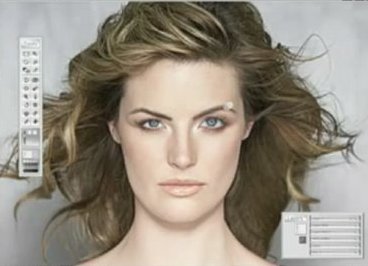Media Smart’s New Body Image Curricula (UK)
Dove Soap Campaign for Beauty Videos
(See 2009 lesson plan related to these videos)

Evolution Watch it here |
Onslaught click above to watch the video (Making of “Onslaught”)Dove ad delves into the ugly side of beauty |
RECENT QUOTES
“The media broadcasts very limited images of what size you should be. It’s a restrictive kind of influence. Young people grow up with images coming through the phone or computer. They’re completely bombarded.” (Professor Michelle Habell-Pallan of the UW Women Studies department quoted here)
Nearly 50 percent of American girls in middle and high school say they want to lose weight because of magazine pictures. (Quoted in “Altered photos harm consumers, should come with disclaimer”, February 2, 2010)
“One of the things I advocate is that we should be teaching media literacy in the schools,” said Jean Kilbourne. “Kids should be learning early on that these images are not real. Media literacy would be a kind of public health approach.” (Source)
“These unrealistic images of women, who are often airbrushed or partially computer generated, have a detrimental impact on women and how they feel about themselves.” (Source) “Just like we have those warnings on cigarette packs, it would be nice to put a little warning on Seventeen magazine,” researcher Laurie Mintz says. ” ‘Warning: Viewing these images is bad for your body esteem.’ ” (Winnipeg Free Press, 04/02/07)
“The images are impossible for most females to achieve, but they sell products and make girls feel negatively about their own looks. Researchers at Brigham and Women’s Hospital in Boston found that the more adolescent and pre-adolescent girls read fashion magazines, the more likely they were to diet and to feel unhappy about their bodies. Researchers at the University of Michigan and Boston College found that while African-American girls ignored images of skinny white female bodies on television and elsewhere, they were concerned about their inability to match white standards of hair and skin color.” (Source)
“….unrealistically thin young women are often used in advertisements for everything from soft drinks to cars….. previous research has already shown that such advertising contributes to negative body images among young girls and women.” (Source)
Males impacted: “”Action figures present subtle messages of unrealistic role models of well-sculpted, heavily muscled, ‘perfect’ bodies that little boys see as their role models.” Sondra Kronberg, director and co-founder of Eating Disorder Associates Treatment & Referral Centers (source)
“Body dissatisfaction can produce extreme body-shaping behaviors, such as eating disorders. Women and girls can’t help being exposed to ultra-thin models in advertising whose body size is unrealistic and unhealthy. There is good evidence already that exposure to these unhealthy
models leads a large proportion of women to feel dissatisfied with their own bodies.” Helga Dittmar, University of Sussex researcher
According to statistics posted by the National Institute on Media and the Family, by age 13, some 53 percent of American girls are unhappy with their bodies; that figure grows to 78 percent by the time girls reach 17. In another study on fifth graders, 10-year-old girls and boys told
researchers they were dissatisfied with their own bodies after watching a music video by Britney Spears or a clip from the TV showFriends. And adolescent girls who viewed commercials depicting unrealistically thin models felt “less confident, more angry, and more dissatisfied with their weight and appearance.”
Source: http://www.christianitytoday.com/tc/2004/006/6.18.html



